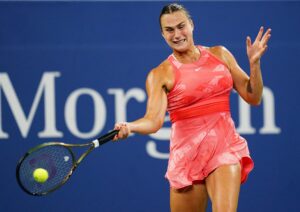This week’s Twitter spat between John McEnroe and Serena Williams over whether the No.1 woman player in the world would be ranked at about the No. 700 man was an unwelcome reminder of tennis’s ability to generate unnecessary headlines about supposed “battles of the sexes.” It has all been reminiscent of the original “battle of the sexes” contest in 1973 between arch-chauvinist Bobby Riggs and Billie Jean King, the great pioneer of professional women’s tennis. And yet the irony is that tennis is probably the most gender-neutral major sport and the sport that has done most to promote gender equality.
Almost from the very beginning of modern tennis (at the end of the 19th century), the sport has been played and watched by both men and women. The first Wimbledon men’s champion (Spencer Gore) may have been crowned in 1877 but it was not long before there was a Wimbledon womwn’s champion (Maud Watson in 1884). Ever since, all the Major tournaments have had both men’s and women’s events in both singles and doubles, and the first ever mixed doubles tournament–in which men and women could play and compete against each other–was staged in 1888 in the north of England, although the All-England mixed doubles championship was not held at Wimbledon until 1913.
It was probably Suzanne Lenglen, the great French champion who emerged after World War One, who did most to boost the profile of the women’s game. Lenglen was not only the first famous female tennis player but the first famous female competitor in any sport. The timing of her emergence was crucial, coinciding with the general development of women’s rights (at least in Western countries) after the end of the Great War, and Lenglen became as much a symbol of the Jazz Age as F. Scott Fitzgerald and Flappers.
The women’s game was further boosted when Helen Wills emerged in the mid-1920s as Lenglen’s first serious rival. Although the two women only ever played each other once (with Lenglen winning an exhibition match in France in 1926, shortly before she retired), they were forever linked in the public imagination, as captured by Larry Engelmann in his 1988 book, The Goddess and the American Girl. And ever since, female tennis players, from Mo Connolly in the early 1950s to Serena herself in the early 21st century, have been at least as famous as their male counterparts. Consequently, watching tennis has always appealed almost equally to men and women, and whatever the more chauvinist men may say that is not simply because of the fashion opportunities that tennis wear has afforded.
In this respect, tennis stands in splendid (or perhaps not so splendid) isolation, because until relatively recently no other major sport has approached this level of gender neutrality or even gender equality. Top-level women’s sport in general has only become fully professionalised in the last 10 or 15 years and even now most women’s sports struggle to generate anything like the media interest or money that most men’s sport does. The obvious point of comparison is with women’s golf. Although there have been female professional golfers since the end of World War One (Jordan Baker, Nick Carraway’s love interest in The Great Gatsby, was one), women’s golf as a whole has enjoyed nothing like the truly global profile of women’s tennis and even today receives little of the widespread television coverage that women’s tennis does.
All of this is not to suggest that tennis is perfect on this front – far from it. It is only in the last few decades, since Billie Jean King won her most important battle of 1973 by threatening the US Open with a boycott by women’s players unless it equalised men’s and women’s prize money, that the Grand Slams and other significant tournaments have begun to offer equal prize money. Even today, the argument is still made by some, including former great male champions such as Pat Cash, that women are undeserving of equal pay, especially at the Majors, because they only play three-set matches while the men play five-setters. The obvious response to such an argument is to introduce best of five-set matches in the women’s game, starting with the Grand Slams, perhaps from the quarterfinals on–but even that seems unnecessary to most.
Nevertheless, the fact remains that tennis is unique among the great global sports in being played and watched by almost equal numbers of men and women. That is something that the sport should cherish, because it is a huge part of its appeal, and it should not be forgotten even when great male players such as McEnroe trot out the tired old line that the best woman would be incapable of beating the 100th or even the 700th best man. Incidentally, the obvious and best response to that is to say that equality does not demand complete equalisation in every respect. After all, no man – whether they are ranked No. 1 or No. 700 – would ever be capable of matching Serena’s unique achievement this year of winning the Australian Open while she was pregnant.






